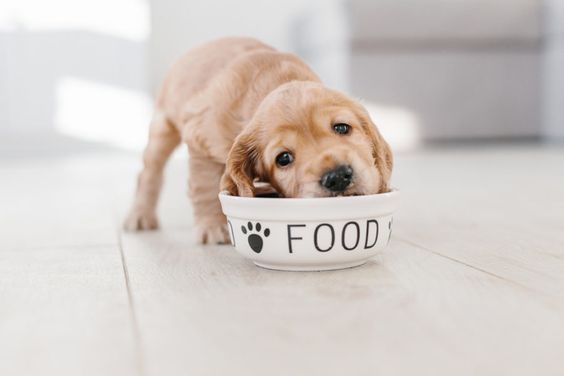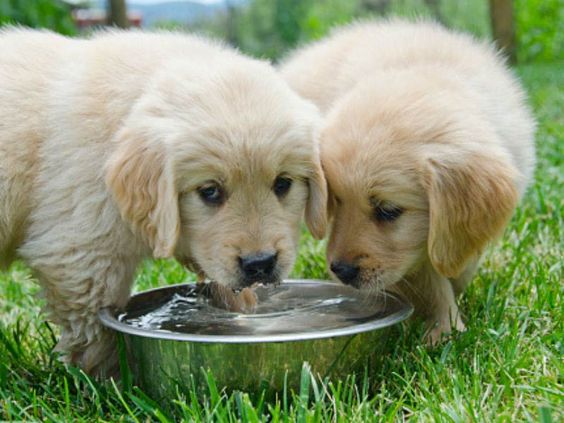Okay, you’ve got home an adorable puppy, and you love watching him prance around with all that energy. But to help him grow into a healthy, strong dog, feeding him the correct food item is essential.
That’s where our puppy feeding guide comes in! Having a well-planned feeding schedule makes sure that your puppy gets all the necessary nutrients at the right times to support proper growth and development.
Sploot's guide will take the guesswork for new puppy parents and help you curate wholesome meals along with a puppy feeding chart so that you can feel confident about your pup’s diet. Check out our feeding chart for puppies and more details to keep your little guy happy, healthy, and bouncing with joy!

Puppy Nutrition Basics
When it comes to raising a healthy and happy puppy, proper nutrition should be your primary goal. Following a puppy feeding chart and setting up routine puppy feeding times will help you provide your pup with all the essential nutrients they need. As puppies are at their growing stage, they require high-quality protein for muscle build-up, healthy fats for energy, calcium, and phosphorus for strong bones, and vitamins like A, D, and E for their immune system. To make sure your puppy's food is up to the mark, here's a quick checklist:
1. High-quality proteins like chicken, mutton, fish or paneer.
2. Healthy fats like coconut oil, flaxseed oil, etc.
3. Calcium and phosphorus, found in eggwith shells, yogurt, etc.
4. Vitamins A, D, and E are available in carrots, apples, etc.
5. DHA is found in salmon, flax seeds, etc.
Always make sure to feed your pup the freshest ingredients and avoid food made from artificial preservatives or fillers at all costs. Keep an eye on your puppy’s energy levels and growth, and adjust feeding times as needed.
How Often Should I Feed My Puppy?
Planning out a structured puppy feeding guide is important to support your puppy’s growth and energy needs. Puppies need small, frequent meals throughout the day, with the number of feedings decreasing as they age. For puppies between 8-12 weeks, four meals spread evenly through the day work best. As they grow (3-11 months), you can adjust to three meals a day.
Here’s a sample of a puppy feeding schedule that you can follow for puppies who are 3+ months old:
1. 7 AM: First meal after a morning bathroom break
2. 9 AM: Short walk or playtime
3. 2 PM: Second meal followed by rest
4. 3 PM: Light exercise or play
5. 5 PM: Third meal and bathroom break
6. 7 PM: Calm play or relaxation before bed
Feeding your puppy smaller portions at regular intervals helps them digest better and feel energetic all day long. Avoid feeding your puppy late at night to prevent digestive problems and keep mealtimes regular to develop a solid routine. Adjusting the feeding schedule to your puppy’s age and activity supports healthy growth and good habits.
Puppy Feeding Schedule & Chart
To support your pup’s healthy growth, follow the below chart for a proper puppy feeding chart from 1 to 12 months:
1. 1-3 months: Feed 4 times a day with high-quality puppy food formulated for growth and rich in proteins, vitamins, and fats.
2. 3-6 months: Feed 3 times a day. Gradually increase portion size as the puppy grows. You can add small chunks of meat to their food and introduce puppy treats as well.
3. 6-9 months: Feed 3 times a day. Begin transitioning from puppy food to adult food around 8-9 months for larger breeds; smaller breeds can stay on puppy food a bit longer.
4. 9-12 months: Feed 3 times a day. Gradually switch fully to adult dog food by 12 months, depending on the breed size.
Transitioning from puppy food to dog food should be done slowly over 7-10 days by mixing both types to avoid digestive issues. Once they have celebrated their 1st birthday (turned 1), feed them twice a day with treats in between to keep them in a fitter state.
Idea For Infographic given below-
How to Choose the Right Food for Your Puppy

Dry Food vs Wet Food
The right food plan plays a major role in your puppy's growth. When comparing dry food and wet food, each has its pros and cons. Dry food is a convenient feeding option for busy pet parents. It helps improve a pup's dental health and is more affordable. In contrast, wet food is more hydrating and tastes better, which makes it a hit even with picky eaters. However, it can be a bit messier and usually more expensive than dry food.
A combination of both dry and wet food can be a good option, depending on the puppy's taste buds and what you prefer as a pet parent. However, fresh dog food is always the best choice due to its higher nutritional value, freshness, and lack of preservatives or unnecessary additives. Puppies thrive on fresh meals that are easy to digest and taste yum.
So, if you plan to shower your pup with only the best, then keep an eye out for sploot's fresh dog food, available in a variety of fresh, vegetarian, and non-vegetarian meal options for puppies.
Can you give homemade food to your puppy?
Yes, you can give homemade food to your puppy, and it can be a budget-friendly option for puppy parents. However, not all human food is suitable. Safe foods for puppies include boiled chicken, carrots, rice, sweet potatoes, and plain yogurt. Avoid feeding them chocolate, onions, garlic, grapes, and salty or fatty foods, as these can be harmful.
Here are some simple recipes that you can whip up at home in a jiffy:
1. Boiled Chicken and Rice: Boil boneless chicken with rice, and add a bit of carrot or sweet potato for added nutrients. Your pup will gobble up this meal in no time.
2. Vegetable and Paneer Stew: Cook a mix of sweet potatoes, carrots, and spinach for a wholesome, nutrient-packed meal. Add in some crumbled paneer, and you're done. It will be a hit with your pup.
These home-cooked meals work amazingly to provide your pup with balanced nutrition. And always follow fixed puppy feeding times. Don’t forget to check in with your vet to understand if these meals are enough to fulfill your puppy's dietary needs.
Feeding Your Puppy Based on Size
Deciding on meal portions to feed your puppy depends on their size, as small and large breeds have different nutritional needs.
Small breed puppies (up to 20 lbs) grow faster and need nutrient-dense food with higher calories to fuel their energy. Alternatively, large breed puppies (over 50 lbs) require food that supports slower, steady growth to avoid joint issues later in life.
For small breeds, go for high-quality food choices specially formulated for their fast metabolism. Look for puppy food with higher protein and healthy fat content.
Now, large-breed puppies benefit from formulas that have balanced calcium and phosphorus levels to support healthy bone development.
Always choose food labeled specifically for your puppy's size, and consult with your vet to confirm if they're receiving the right nutrition for proper growth.
Feeding Your Puppy According to Seasons

Adjusting your puppy's diet according to the seasons is important to keep them comfortable and healthy. In hot weather, lighter meals, and increased water intake are crucial to prevent the possibility of dehydration. Easily digestible options like rice with boiled chicken and veggies or curd help keep your puppy cool. Again, during winter months, heartier meals will fuel them with the energy and warmth required in cooler weather to stay cozy; so think boiled eggs, sweet potatoes, chicken, mutton, and rice with vegetables.
It is to be noted that food temperature matters too. So, serve meals at room temperature or slightly warm in winter, and cooler meals during summer. Some regular Indian food options that you can feed your pup are khichdi (rice and lentils), stews with boiled carrots, pumpkin, and curd rice work great. Always remember to offer plenty of fresh water and buttermilk to your pup to beat the heat and stay hydrated in the hotter months.
How often to Give Puppy Treats
Puppy treats are small, nutritious snacks given between meals and are often used during the training process or to reward good behavior. Treats should be given in moderation, depending on their type and nutritional value.
Some amazing wholesome treat options for your pup are:
1. Sploot Crunchies Chicken & Cinnamon Dog Biscuits
2. Sploot Crunchies Carrot & Pumpkin Dog Biscuits
3. Sploot Crunchies Chicken & Coconut Jerky Dog Treats
Treats should never make up more than 10% of a puppy’s diet. For tasty and nutritious options, check out the variety of dog treats available on sploot!
Join the sploot Community
Discover the vibrant sploot community of over 50k dog parents and canine experts who come together to share insights and tips and support each other in their dog parenting journey. Get answers to all your puppy-related queries, discover fresh food options, and shop for dog services to become the best pet parent you can be. Connect with us through AMA sessions, Pup Talks, and special events. Follow sploot on Instagram to stay updated and join conversations on what's trending in the doggy world!
FAQs On Puppy Guide with Chart
1. When to start feeding puppies?
Puppies should begin eating solid food when they are around 3.5 to 4.5 weeks of age, as their nutritional needs outgrow what their mother’s milk can provide.
2. What can I feed my 3-month-old puppy?
At 3 months old, your puppy should be fed high-quality puppy food that is rich in protein, healthy fats, carbohydrates, vitamins, and minerals.
3. Can puppies drink water?
Yes, of course! Puppies can drink water and need it to stay hydrated. Make sure to always fill their water bowls with fresh water that they can sip on from time to time.
4. Is rice good for a 3-month-old puppy?
Yes, absolutely! Rice is good for a 3-month-old puppy and can be beneficial, especially if they have an upset stomach. It’s easy to digest, low in fiber, and can be mixed with their regular puppy food.
5. Are 2 meals enough for a puppy?
Puppies should be fed smaller meals at frequent intervals. Ideally, they need 4 meals till they turn 3 months and then you can feed them with 3 meals a day till they turn 1 year old. 2 meals a day work great for adult dogs.




